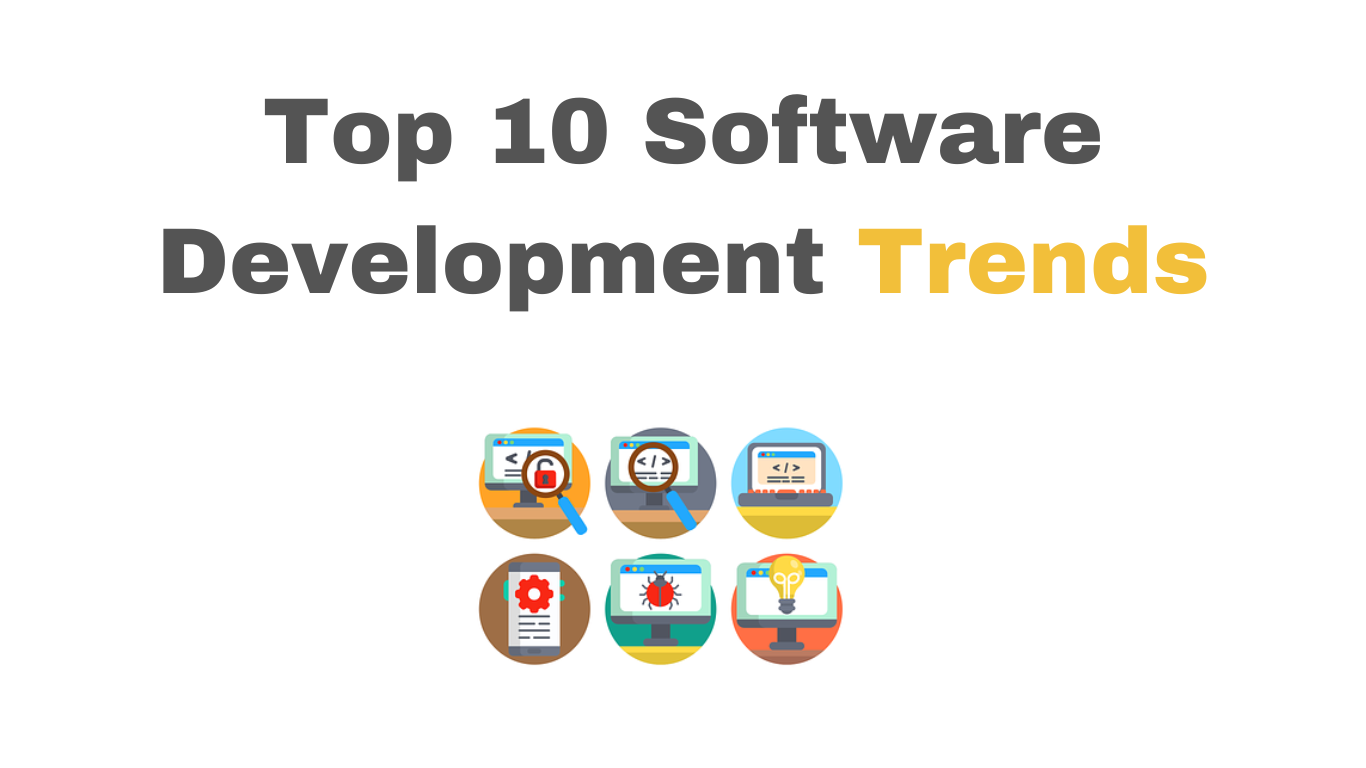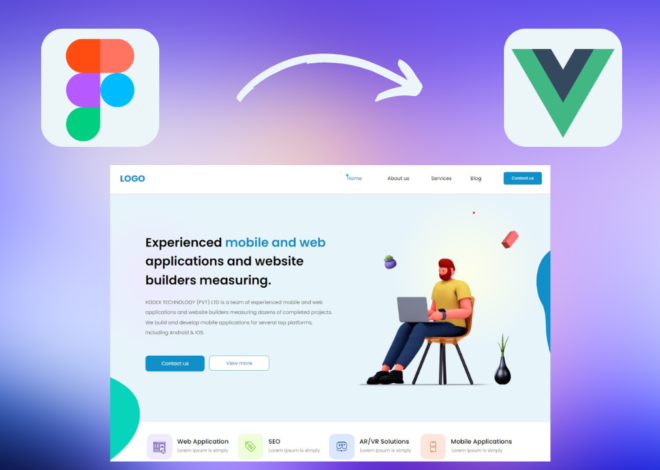
Top 10 Software Development Trends in 2024
The software development landscape is in a constant state of flux, propelled by innovation and the ever-evolving needs of users. As we navigate through 2024, several key trends are poised to significantly impact how software is built, deployed, and experienced. Here’s a deeper dive into the top 10 trends that will reshape the software development landscape:
AI-Powered Development: From Automation to Collaboration
Artificial intelligence (AI) is rapidly transforming industries, and software development is no exception. We’re moving beyond simple automation of repetitive tasks. AI-powered tools are now assisting with:
- Code Completion: AI can suggest code snippets or even entire functions based on the context, reducing development time and improving code quality.
- Intelligent Testing: AI can automatically generate test cases, identify potential bugs, and even perform exploratory testing, uncovering edge cases that manual testing might miss.
- Debugging Assistance: AI can analyze code and suggest potential causes for errors, streamlining the debugging process.
These advancements are not meant to replace developers entirely. Instead, AI acts as a collaborator, freeing developers to focus on more strategic aspects like design, problem-solving, and innovation.
Low-Code/No-Code Development: Democratizing App Creation
The rise of low-code/no-code (LCNC) development platforms empowers citizen developers – those without extensive coding experience – to create applications. These platforms provide visual drag-and-drop interfaces and pre-built components, enabling users with limited coding knowledge to build basic applications for internal use or specific workflows.
The benefits of LCNC development include:
- Faster Development Cycles: Citizen developers can create simple applications quickly without relying on professional programmers.
- Reduced Costs: LCNC platforms eliminate the need for extensive coding resources, leading to cost savings for businesses.
- Improved Agility: Businesses can respond to changing needs more quickly by enabling citizen developers to build custom applications in-house.
However, it’s important to remember that LCNC platforms have limitations in terms of complexity and customization. They are best suited for building simple applications or automating internal workflows.
Cloud Continues its Reign: Scalability, Flexibility, and Efficiency
Cloud computing has become the foundation for modern software development. Its key advantages include:
- Scalability: Cloud resources can be easily scaled up or down based on demand, allowing applications to handle fluctuating workloads efficiently.
- Flexibility: Cloud platforms offer a wide range of services, from compute power and storage to databases and analytics, enabling developers to build applications without managing complex infrastructure.
- Cost-Effectiveness: Businesses only pay for the resources they use, making cloud computing a cost-efficient solution for development.
Cloud-native architectures built with microservices and containerization are becoming the norm. Microservices break down applications into smaller, independent components that can be developed, deployed, and scaled independently. Containerization packages these microservices with their dependencies, ensuring consistent execution across different environments. This approach enables faster development cycles, easier deployments, and improved maintainability.
Focus on Cybersecurity: Building Secure Software from the Ground Up
As software becomes more complex and interconnected, the threat landscape expands. Security breaches can have devastating consequences, causing financial losses, reputational damage, and even legal repercussions. To mitigate these risks, secure coding practices are paramount. This includes:
- Input Validation: Sanitizing user inputs to prevent malicious code injection attacks.
- Secure Data Storage: Encrypting sensitive data at rest and in transit.
- Regular Security Testing: Integrating security testing throughout the development lifecycle to identify and address vulnerabilities early on.
A focus on data privacy is also crucial. Developers need to be aware of data privacy regulations like GDPR and CCPA and ensure their applications comply with these regulations.
Progressive Web Apps (PWAs): Bridging the Gap Between Web and Native
Progressive Web Apps (PWAs) offer app-like features and functionality accessible through a web browser. This eliminates the need for app store downloads and updates, making them a user-friendly and cost-effective alternative for businesses. PWAs offer several advantages:
- Improved User Experience: PWAs can work offline, send push notifications, and offer features typically associated with native apps.
- Increased Reach: PWAs can be accessed from any device with a web browser, regardless of platform.
- Reduced Development Costs: Developing a single PWA can reach a wider audience compared to developing separate native apps for different platforms.
With advancements in web technologies like Service Workers and WebAssembly, PWAs are expected to further blur the line between native apps and web applications, offering a seamless user experience across all platforms.
The Edge Computing Era: Processing Power Closer to the Source
Edge computing brings processing power and data storage closer to the source of data, typically on devices at the network’s edge. This is particularly beneficial for applications that require:
- Real-time Responsiveness: Edge computing reduces latency by minimizing the distance data needs to travel for processing. This is crucial for applications like autonomous vehicles or industrial automation systems.
- Low Latency: For applications requiring immediate response, such as online gaming or augmented reality, edge computing ensures near real-time processing.
- Reduced Reliance on Cloud: Edge computing can handle certain tasks locally, reducing reliance on centralized cloud resources and improving overall network efficiency.
Expect to see increased adoption of edge computing for:
- Internet of Things (IoT) Applications: Edge devices can pre-process data from sensors before sending it to the cloud, reducing bandwidth consumption and enabling faster decision-making.
- Geographically Distributed Systems: Edge computing can provide local processing power for geographically dispersed systems, improving performance and reliability.
Blockchain Technology Finds its Niche: Beyond Cryptocurrency
Blockchain, the technology behind cryptocurrencies, offers a secure and transparent way to store and manage data. While widespread adoption might be further down the road, blockchain has the potential to revolutionize specific software domains, including:
- Supply Chain Management: Blockchain can track the movement of goods throughout the supply chain, ensuring transparency and immutability of data, which can be crucial for industries like pharmaceuticals or food safety.
- Secure Data Sharing: Blockchain can facilitate secure data sharing between multiple parties without relying on a central authority. This can be beneficial for applications like healthcare data sharing or identity management.
- Identity Verification: Blockchain can be used to create tamper-proof digital identities, streamlining user onboarding and reducing the risk of identity theft.
The Evolution of DevOps: Collaboration and Automation
DevOps, the philosophy of collaboration between development and operations teams, continues to evolve. Automation tools and continuous integration/continuous delivery (CI/CD) pipelines are becoming essential for:
- Faster Deployments: CI/CD pipelines automate the software build, test, and deployment process, enabling frequent and reliable deployments.
- Improved Software Quality: Automated testing throughout the development lifecycle helps identify and fix bugs early on, leading to higher quality software.
- Streamlined Development Process: DevOps tools and practices promote collaboration and communication between development and operations teams, leading to a more efficient development process.
As DevOps matures, we can expect even greater levels of automation, with tools capable of self-healing infrastructure and automatically responding to incidents.
Prioritizing User Experience (UX): Design Thinking for Software
In today’s competitive landscape, exceptional user experience (UX) is no longer a luxury; it’s a necessity. Users expect software to be intuitive, easy to use, and aesthetically pleasing. To achieve this, developers are increasingly focusing on:
- User-Centered Design Principles: Understanding user needs and behaviors through research and testing is crucial for designing a user-friendly interface.
- Accessibility: Ensuring software is usable by everyone, regardless of ability, is becoming a key consideration in UX design.
- Microinteractions and Animations: Subtle animations and interactions can enhance user engagement and provide valuable feedback.
By prioritizing UX, developers can create software that is not only functional but also enjoyable to use, leading to higher user satisfaction and increased adoption.
Sustainable Development Practices: Building Green Software
With growing concerns about environmental impact, software development is embracing sustainability. Here’s how developers are making software greener:
- Code Optimization: Writing efficient code that uses fewer resources can significantly reduce the environmental footprint of software.
- Cloud Provider Selection: Choosing cloud providers that utilize renewable energy sources can minimize the carbon footprint associated with software development and operation.
- Serverless Architecture: Serverless architectures eliminate the need for constantly running servers, leading to reduced energy consumption.
By adopting sustainable practices, developers can contribute to a greener future and build software that is not only powerful but also environmentally responsible.
How To Crack Android Developer Job In 2024
Roadmap To Learn Flutter In 2024: Beginner To Advance
These ten trends are shaping the future of software development in 2024 and beyond. By staying informed and adapting to these changes, developers can build innovative, secure, user-friendly, and sustainable software applications that thrive in the ever-evolving technological landscape.


